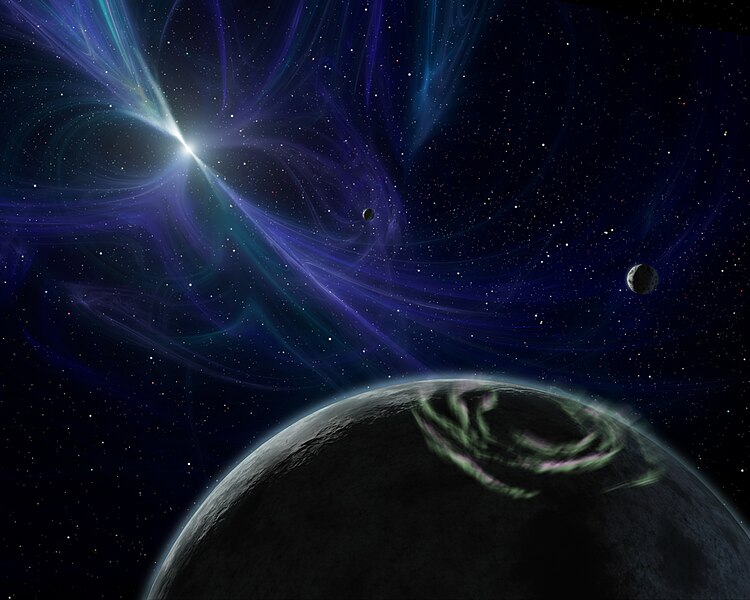Fitxer:Artist's concept of PSR B1257+12 system.jpg

Mida d'aquesta previsualització: 750 × 600 píxels. Altres resolucions: 300 × 240 píxels | 600 × 480 píxels | 960 × 768 píxels | 1.280 × 1.024 píxels | 2.560 × 2.048 píxels | 3.000 × 2.400 píxels.
Fitxer original (3.000 × 2.400 píxels, mida del fitxer: 2,66 Mo, tipus MIME: image/jpeg)
Historial del fitxer
Cliqueu una data/hora per veure el fitxer tal com era aleshores.
| Data/hora | Miniatura | Dimensions | Usuari/a | Comentari | |
|---|---|---|---|---|---|
| actual | 00:35, 15 abr 2006 |  | 3.000 × 2.400 (2,66 Mo) | Superborsuk | * '''Source''': [http://www.spitzer.caltech.edu/Media/releases/ssc2006-10/ssc2006-10c.shtml] * '''Image Credit''': NASA/JPL-Caltech * '''Image produced by''': R. Hurt (SSC) |
Ús del fitxer
Les 3 pàgines següents utilitzen aquest fitxer:
Ús global del fitxer
Utilització d'aquest fitxer en altres wikis:
- Utilització a af.wikipedia.org
- Utilització a ar.wikipedia.org
- Utilització a ast.wikipedia.org
- Utilització a be-tarask.wikipedia.org
- Utilització a be.wikipedia.org
- Utilització a bg.wikipedia.org
- Utilització a bn.wikipedia.org
- Utilització a de.wikipedia.org
- Utilització a en.wikipedia.org
- Neutron star
- Wikipedia:Selected anniversaries/January 9
- PSR B1257+12
- Pulsar
- Timeline of Polish science and technology
- Methods of detecting exoplanets
- Wikipedia:WikiProject Astronomy/Image Review
- User:Spark Moon
- User:WilyD/potential
- PSR B1257+12 A
- PSR B1257+12 B
- PSR B1257+12 C
- Template:PSR B1257+12
- User:CatJar
- User:Tr00rle
- Wikipedia:Userboxes/Science/Astronomy
- List of Polish inventors and discoverers
- User:Nrco0e/Userboxes
- User:Kepler-1229b/sandbox/PSR 1257+12 D
- User:Dronebogus/Basement
- Habitability of neutron star systems
- User:Nrco0e/Userboxes/Pulsarplanets
- Pulsar planet
- Wikipedia:Main Page history/2024 January 9
- Utilització a en.wikinews.org
- Utilització a eo.wikipedia.org
- Utilització a es.wikipedia.org
Vegeu més usos globals d'aquest fitxer.



